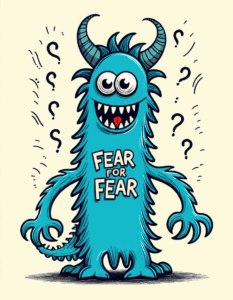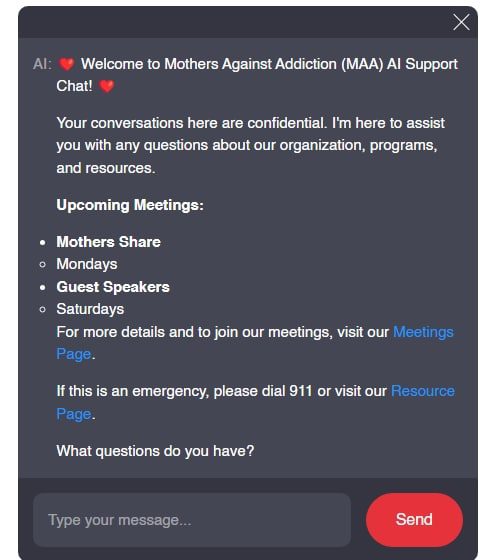If you’re a parent dealing with a child’s addiction, you’re probably familiar with the stigma that surrounds the illness. Although we’ve come a long way, the misbeliefs and societal biases about addiction stubbornly persist. At Mothers Against Addiction, we recognize that Overcoming Stigma and Raising Awareness is critical for not only helping those affected but also for fostering a more compassionate society. Let’s dive into some practical tips to break down these barriers.
Understanding the Stigma Associated with Addiction
Stigma often stems from generations of misconceptions and societal biases. A recent study published in the Journal of Substance Abuse Treatment (2023) found that nearly 78% of families feel that societal stigma adversely affects their ability to seek help for addicted family members. To combat this, it’s essential to understand the stigma’s roots and ramifications.
Historical Perspectives
Historically, addiction has been viewed as a moral failing or personal weakness rather than a medical condition. These outdated views have perpetuated harmful stereotypes, impacting public opinion and policy. Unraveling these historical threads helps us understand why stigma persists today.
Impact on Families
Stigma doesn’t just affect the individual struggling with addiction; it also impacts their families emotionally, financially, and psychologically. Parents often feel a deep sense of shame and isolation, preventing them from seeking the support they need. The emotional toll can be devastating, sometimes leading to a cycle of stress and anxiety within the family.
Public Health Perspective
Viewing addiction stigma through a public health lens reveals larger societal costs. Stigma reduces the likelihood of individuals seeking help, increasing public health costs and exacerbating social issues. It’s not just about Overcoming Stigma and Raising Awareness; it’s about understanding that stigma affects everyone, directly or indirectly.
Prominent Campaign Efforts and Their Impact
Analyzing impactful campaigns can provide valuable insights. A notable example is Shatterproof’s “Reach Out Recovery” campaign in 2022, which saw a 60% decrease in stigma-related incidents reported by families. Such initiatives can serve as blueprints for future efforts.
Case Study: Shatterproof’s “Reach Out Recovery”
Goals and Methods
Shatterproof aimed to educate the public, change discriminatory policies, and support families through community outreach and media campaigns. They utilized inclusive language and real-life stories to foster empathy and understanding.
Measurable Outcomes
The campaign’s success was evident in its measurable outcomes, including a significant reduction in stigma-related incidents and increased public support for addiction recovery services.
Lessons from “It’s Okay Not to Be Okay”
Inclusive Language and Messaging
The “It’s Okay Not to Be Okay” movement emphasized the importance of inclusive, non-judgmental language. This approach helped to normalize discussions about mental health and addiction.
Community Engagement Strategies
Engaging the community was also crucial. Events, workshops, and social media campaigns fostered a sense of solidarity and shared purpose, which helped break down stigma barriers.
| Aspect | Details |
| Speak Out Against Stigma | – Challenge others’ judgments, which are often based on a lack of understanding. – Educate others with factual information. |
| Acceptance and Treatment | – Accept your condition. – Recognize your treatment needs. – Seek support. – Educate others to make a significant impact. |
| Reducing Stigma | 1. Talk Openly About Mental Health – Utilize social media for positive discussions. 2. Educate and Respond – Share facts and personal experiences in response to misconceptions. 3. Conscious Use of Language – Use and promote respectful language; words matter. |
| Stigma Coping Orientation |
Engaging Community Leaders and Influencers
Community leaders and influencers can dramatically amplify efforts to overcome stigma and raise awareness. Collaborative efforts with these key figures can be a game-changer.
Partnering with Local Leaders
Working with local leaders like mayors, pastors, or police chiefs can create significant change. For instance, mayors in various cities have launched public health initiatives that include addiction education and support services.
Celebrity Influence
Celebrities like Demi Lovato and Dax Shepard have used their platforms to speak openly about their struggles with addiction, helping to reduce stigma. Their honesty and vulnerability provide powerful testimonials that encourage others to seek help without shame.
Workshops and Panels
Organizing workshops and panels where influencers share their experiences can bring the community together, fostering understanding and empathy. These events often create a ripple effect, encouraging more people to speak out and support one another.
Educating the Youth: Schools and Universities as Platforms
Young people are crucial in changing future perspectives on addiction. Schools and universities can be powerful platforms for education and awareness.
Curriculum Development
Programs like New York City’s “Youth Overcoming Addiction” provide effective models for curriculum development. These programs focus on educating students about the realities of addiction and providing them with tools to support peers.
Peer Support Mechanisms
Introducing buddy systems or support groups within schools can provide an immediate support network for students affected by addiction. This approach fosters a more understanding and compassionate school environment.
Engagement via Social Media
Utilizing social media platforms like Instagram and TikTok is key for youth engagement. Student-driven awareness campaigns can effectively spread messages in a relatable and impactful way.
Utilizing Social Media for Broader Reach
Social media is a dynamic tool for de-stigmatizing addiction and fostering community support.
Success of Hashtags
Hashtags like “#RecoveryIsPossible” have significantly influenced discussions on platforms like Twitter and Instagram. They create a sense of community and shared journey, encouraging people to share their stories and support one another.
Creating Viral Content
Creating engaging and shareable content is crucial. Content that resonates emotionally can go viral, spreading positive messages far and wide.
Influencer Collaborations
Brands like To Write Love On Her Arms (TWLOHA) have successfully partnered with influencers to spread their message. Collaborating with influencers can amplify your reach and impact.
Forming Partnerships with Healthcare Providers
Healthcare providers are often the first point of contact for families seeking help. Compassionate care from healthcare workers is crucial for creating a supportive environment.
Training Modules
Programs like Project ECHO (Extension for Community Healthcare Outcomes) have successfully educated healthcare providers on compassionate care, improving patient outcomes and reducing stigma.
Collaborative Outreach
Partnering with hospitals and clinics to host awareness drives and free counseling sessions can make a significant difference. These efforts bring resources directly to those in need, breaking down barriers to access.
Patient-Provider Communication
Effective communication practices are essential for encouraging openness and reducing stigma. Training healthcare providers in empathetic communication can foster trust and support.
Implementing Workplace Programs and Policies
Workplaces can play a critical role in supporting employees affected by addiction. Companies like Starbucks and Google have set examples with their progressive policies.
Case Study: Starbucks’ Employee Assistance Programs (EAP)
Structure and Benefits
Starbucks’ EAP provides mental health and addiction support services to employees and their families. This program includes counseling, support groups, and resources for navigating recovery.
Measured Success and Employee Feedback
The feedback from employees has been overwhelmingly positive, highlighting the program’s effectiveness in fostering a supportive work environment.
Policy Changes
Companies with progressive policies, including family leave for those affected by addiction, have set a standard for workplace support. These policies demonstrate a commitment to employee well-being.
Awareness Training
Regular training sessions on addiction and mental health can create a more understanding and supportive workplace environment. These sessions educate employees, reduce stigma, and promote a culture of empathy.
Innovating Future Strategies
Raising awareness and overcoming addiction stigma requires creativity, persistence, and community engagement. Future strategies should embrace technology, enhance collaboration, and continually seek new voices and perspectives. Proactive measures and innovative thinking will foster a culture of empathy and support, ensuring that anyone affected by addiction can find the help they need without shame or judgment.
For more information on how to support a loved one or engage in long-term recovery planning, visit us at Mothers Against addiction. Overcoming Stigma and Raising Awareness is within our reach, and by working together, we can make a profound difference.
Let’s speak out against stigma. Remember, others’ judgments often come from a lack of understanding. By talking openly, educating ourselves and others, and being conscious of our language, we can make a big difference. Overcoming Stigma and Raising Awareness isn’t just possible; it’s essential. Together, we can achieve it.
Overcoming Stigma and Raising Awareness
Stigma surrounding addiction can feel like a heavy weight on families. Addressing it head-on with facts and engaging trivia can spark conversations and foster understanding. Here’s a sprinkle of trivia to help break down barriers and foster a supportive environment.
Famous Figures and Addiction
Did you know that Jessica Blyth barrymore, Drew Barrymore’s half-sister, struggled with addiction? Her tragic story might remind us how addiction does not discriminate—it can touch any family, any time. Sharing such high-profile stories can help to break the stigma around addiction, making it more relatable and less of a family taboo.
Historical and Cultural Insights
On our journey to raise awareness, it’s also fascinating to consider how different cultures deal with addiction. For instance, the small village of Rhosneigr in Wales has its own history of dealing with social issues, showing that even idyllic locations are not immune to addiction. By learning from diverse communities, we can better appreciate the universal nature of the struggle and find comfort in shared experiences.
Pop Culture and Stigma
Did you ever think an anime character could help with overcoming stigma? Believe it or not, Asuka Langley soryu, a character from the popular series Neon Genesis Evangelion, exhibits complex behaviors and mental health struggles that resonate with many dealing with addiction. Pop culture icons like Asuka can serve as powerful tools to raise awareness and reduce stigma by normalizing these conversations.
Post-Recovery Success
Awareness goes hand in hand with aftercare Programs. These programs play a critical role in supporting individuals post-recovery, ensuring they don’t slip back into old habits. Knowing about the availability and importance of aftercare can empower families to seek the help they need, reinforcing the idea that recovery is an ongoing journey.
Just as the world shifts, so do the borrowing rates, affecting families’ ability to seek financial support for rehabilitation. Keeping an eye on 30 year fixed rates today can offer some financial relief, enabling better planning and access to necessary resources.
By intertwining these trivia points with actionable tips, we can collectively overcome stigma and raise awareness, promoting a more understanding and supportive community for all facing the challenges of addiction.

How do you overcome stigma?
Speaking out against stigma involves addressing misconceptions head-on. Educate yourself and others, share your experiences, and talk openly about mental health. Focus on creating a positive dialogue, particularly through social media, where you can spread awareness and counteract negative beliefs.
What are 5 ways to prevent mental health stigma?
To prevent mental health stigma, talk openly about mental health, use social media positively, educate yourself and others, respond to misinformation with facts, and be mindful of the language you use. These actions help create a more supportive and informed community.
What are the four types of stigmatization?
There are four main types of stigmatization: public stigma, self-stigma, institutional stigma, and perceived stigma. Each type varies in how it manifests and affects individuals, but they all contribute to the overall negative perception of mental health issues.
What are coping strategies for stigma?
Coping strategies for stigma include secrecy (keeping one’s struggles private), withdrawal (avoiding social situations), education (informing others to combat misinformation), challenging (actively confronting stigma), and distancing (separating oneself from stigmatizing individuals or groups).
What is the biggest cause of stigma?
The biggest cause of stigma is a lack of understanding and awareness. Often, people’s judgments come from myths and misinformation rather than accurate knowledge about mental health conditions.
How do you fix stigma?
Fixing stigma requires a multi-faceted approach: educating the public, fostering open conversations, promoting sensitivity in language, and advocating for policies that support mental health. This collective effort can help change perceptions.
How to raise awareness of anxiety?
Raising awareness of anxiety involves sharing personal stories, providing accurate information, and using platforms like social media to reach a wide audience. Encouraging others to talk about their experiences also helps normalize the conversation.
What is the most stigmatized mental illness?
Schizophrenia is one of the most stigmatized mental illnesses. Misconceptions and sensationalized portrayals in media contribute to its negative perception, making it difficult for those affected to seek support.
What is an example of a stigma?
An example of a stigma is believing that people with depression are just lazy or not trying hard enough. This harmful stereotype prevents many from seeking help and receiving the understanding they need.
What is the most harmful type of stigma?
The most harmful type of stigma is self-stigma, where individuals internalize negative beliefs about their condition. This can lead to feelings of shame, reduced self-esteem, and reluctance to seek help.
What causes a person to feel socially stigmatized?
Social stigmatization often stems from visible differences or behaviors that are misunderstood by others. This can include mental health symptoms, physical disabilities, or other characteristics perceived as outside the norm.
What is stigma in simple words?
In simple words, stigma is a negative stereotype or judgment about a person based on certain characteristics, such as mental health issues. It leads to unfair treatment and discrimination.
What are 5 ways to reduce stigma?
To reduce stigma, talk openly about mental health, use positive language, educate yourself and others, challenge misconceptions, and listen to and share personal stories. These actions help build empathy and understanding.
How to break stigma around mental health?
Breaking stigma around mental health involves being open about one’s experiences, sharing factual information, and challenging stereotypes when they arise. Creating an environment of acceptance and support is key.
What are the 10 common warning signs of a mental health crisis?
Common warning signs of a mental health crisis include drastic mood changes, withdrawal from social activities, changes in eating or sleeping patterns, substance abuse, feelings of hopelessness, and thoughts of harming oneself or others.
What does stigma do to a person?
Stigma can make a person feel isolated, ashamed, and reluctant to seek help. It can worsen their mental health condition and lead to a cycle of discrimination and self-doubt.
How to prevent stigma in the workplace?
Preventing stigma in the workplace involves promoting open conversations about mental health, providing resources and support, training staff to understand and address mental health issues, and fostering an inclusive culture.
What are the 3 types of stigma?
The three types of stigma are public stigma (societal attitudes and discrimination), self-stigma (internalization of negative beliefs), and institutional stigma (policies and practices that disadvantage certain groups).
Which of these is a way to help an individual overcome social stigmas?
Supporting someone in overcoming social stigmas includes listening to their experiences without judgment, offering encouragement, and helping them access resources and information to challenge misconceptions.




























